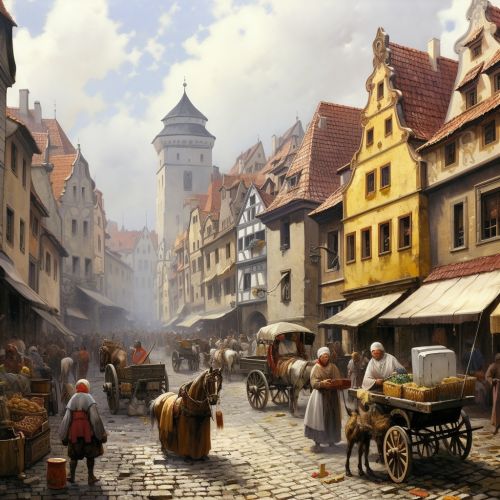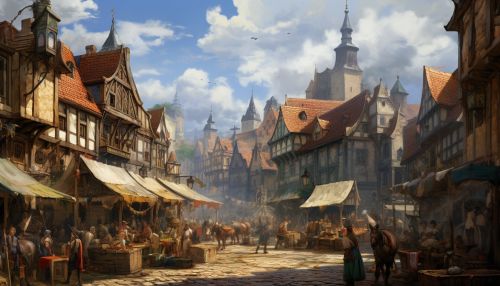Economic history of Poland
Early History
The economic history of Poland can be traced back to the Middle Ages, when the country was a major center of trade and commerce in Central Europe. The Polish economy was primarily based on agriculture, but there was also significant activity in crafts and trade. The country's strategic location on the trade routes between Western Europe and the East contributed to its economic development.


The Polish-Lithuanian Commonwealth
During the era of the Polish-Lithuanian Commonwealth, from the 16th to the 18th century, Poland was one of the largest and most populous countries in Europe. The Commonwealth was characterized by a unique system of "Golden Liberty", with an elected king and a powerful nobility. The economy of the Commonwealth was dominated by agriculture, with grain exports playing a crucial role. However, the Commonwealth also saw the development of manufacturing and mining industries, particularly in the regions of Silesia and Greater Poland.
Partitions of Poland
The late 18th century brought a period of decline for the Polish economy, culminating in the Partitions of Poland by Russia, Prussia, and Austria. The partitions resulted in the loss of independence and significant economic disruption. The partitioning powers implemented their own economic policies in the annexed territories, often leading to the exploitation of Polish resources and labor.
Industrialization and Economic Development in the 19th Century
Despite the political challenges, the 19th century saw significant economic development in Poland. The process of industrialization began, particularly in the German and Russian controlled parts of Poland. The textile industry in Łódź, the mining and metallurgy industries in Silesia, and the development of the Warsaw-Vienna railway were among the most notable examples of this industrial growth.
Interwar Period
Following the end of World War I, Poland regained its independence and embarked on a period of economic reconstruction and modernization. The interwar period was marked by significant economic growth, but also by social and economic inequalities. The Great Depression of the 1930s had a severe impact on the Polish economy, leading to high unemployment and economic stagnation.
World War II and its Aftermath
World War II brought devastation to Poland's economy. The war resulted in the loss of approximately 30% of Poland's population and 85% of its industry. The post-war reconstruction under the communist regime was marked by the nationalization of industry and the collectivization of agriculture. The centrally planned economy was characterized by inefficiencies and shortages, but also by significant industrial growth and the expansion of education and social services.
Transition to a Market Economy
The economic crisis of the 1980s led to the fall of the communist regime and the transition to a market economy. The "shock therapy" economic reforms of the early 1990s, led by Finance Minister Leszek Balcerowicz, were aimed at transforming the Polish economy into a free-market system. These reforms resulted in a period of economic hardship, but also laid the foundation for the rapid economic growth that followed.


Poland in the European Union
Poland's accession to the European Union in 2004 has had a significant impact on its economy. EU membership has brought economic benefits, including access to the single market and structural funds for development. Poland's economy has grown rapidly in the 21st century, making it one of the fastest-growing economies in the EU. However, challenges remain, including regional disparities, infrastructure needs, and the transition to a low-carbon economy.
